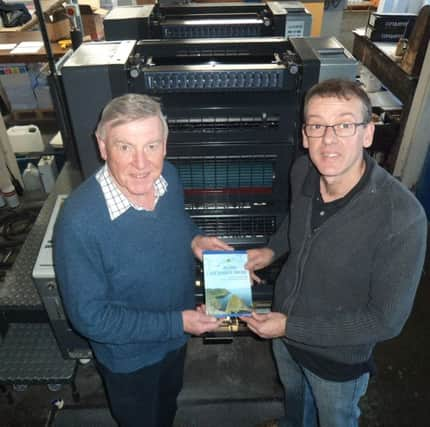An alluring journey through time


It is seven years since his memorable “Fishermen of Dunseverick” was published, a book which now holds a well-deserved place as a classic of local historical literature.
So, it was with anticipation that I opened “Along Lochaber Shore”. It was soon evident that I was not going to be disappointed.
Advertisement
Hide AdAdvertisement
Hide AdJames McQuilken is a natural story-teller with an amazing fund of tales to tell. The ability to convey a story to the printed page, and tell it well, is a gift that it is not easily acquired, but the Dunseverick-born author achieved it superbly in his previous book and he has done so again.
He has much to tell, and herein lies one of the important aspects of the book. For there is also much to be lost were it not for the patient creation of books such as this.
The reader of “Along Lochaber Shore” gets very much what it says on the cover – a journey along an historic stretch of coastline, almost stone by stone, it seems, with tales from every townland, memories of people and families, recollections from farmyard and field, harbour and hedgerow,
One can only wonder at the stamina of the writer in collecting and relating this information which has often existed only in the memories of a few and was within a generation of being lost for ever.
Advertisement
Hide AdAdvertisement
Hide AdI have to admit that the name Lochaber is one with which I am not very familiar, although it will be well-known to those living in the area stretching from Portballintrae to Portmoon. The author readily points out, however, that there are only three remaining references to the name.
These are in the preserved racing drontheim Arrow, acknowledged as being paid-for by “the fishing communities of Lochaber”; in a plaque on the wall of the Aird Orange Hall, which refers to Lochaber LOL 1195; and on a farm outhouse whose gable proclaims that it was once the Lochaber School, built in 1827.
The truth is, no townland of Lochaber ever seems to have existed, although the name is likely to have been imported from Scotland, where it is prominent on the western shore of Argyllshire. The author offers a number of interesting theories on how the name arrived in North Antrim.
He begins his journey eastwards from the headland of Runkerry and in the course of 160 pages takes us on a fascinating voyage that reveals much of a time and a people that are gone. In this, it greatly complements the tales of the Dunseverick fishermen among whom James has his roots and of whom he has previously written.
Advertisement
Hide AdAdvertisement
Hide AdThere are tales of the regattas run by every self-respecting harbour along the coast, with rowing races fought over with a passion that had little to do with the amazingly lucrative prizes offered.
Brought to life again are almost forgotten hamlets and villages such as Lisserluss and Tonduff and people who once lived there. Events ranging from the stirring sea battle between a German submarine and a little potato boat out of Coleraine to more peaceful but nonetheless lively summer camps set up each by the Boys’ Brigade. And the long-lamented Causeway Tram is not neglected, its stories told in prose and poem.
Sources for the astonishing collection of information which James McQuilken has slotted between the covers of this book include the Ordnance Survey Memoirs of the 1830s, the Griffith Valuation of the 1850s and census reports of 1901 and 1911, as well as newspaper reports, family histories and individual memories.
The result is a hoard of hidden treasure emerging from homes and halls throughout the district. Farm ownerships and changes are recalled, as well as local superstitions, activities and legends, pen portraits of people and their place within the community, not to mention actual photographs, some published for the first time, of people long departed, as well as many who still inhabit Lochaber.
Advertisement
Hide AdAdvertisement
Hide AdHow many, I wonder, have heard of the famous and costly court battle fought within the Mill family of Portmoon House, or the mysterious tale of the cavern that brought instant terror to the only man ever to have entered it, or the dislike local fishermen had for red-headed women?
There is reference, too, to the local folk music collected a century ago by the famous Sam Henry, to the irrepressible Causeway guides who inhabited the world’s natural wonder. Local words and sayings are not forgotten, or the souvenirs and mementoes created for the visitors of yesterday.
This journey in the company of James McQuilken along Lochaber shore, meeting people, listening to their tales and learning forgotten history, has resulted in a real gem of a book, all printed, published and packaged in their usual professional manner by Impact of Ballycastle.
Copies can be obtained from Sam’s Newsagency, Bushmills, McLister’s, Ballycastle, Book Case, Portrush, Coleraine Book Shop, Society Street, and it is typical of James Wilkinson that all profit will be donated to Dunseverick Parish Church Bell Tower Restoration Project.
Hugh McGrattan.